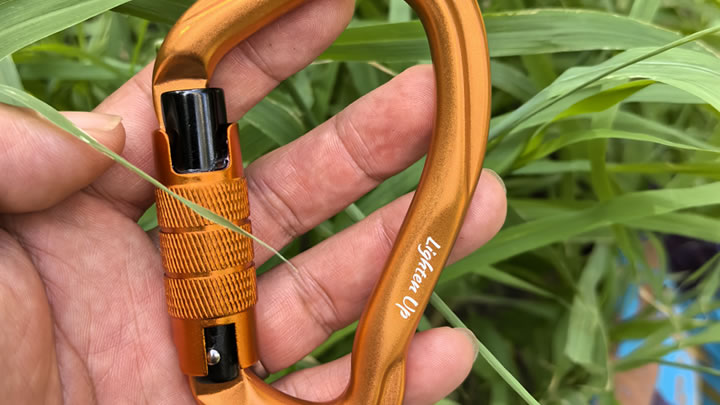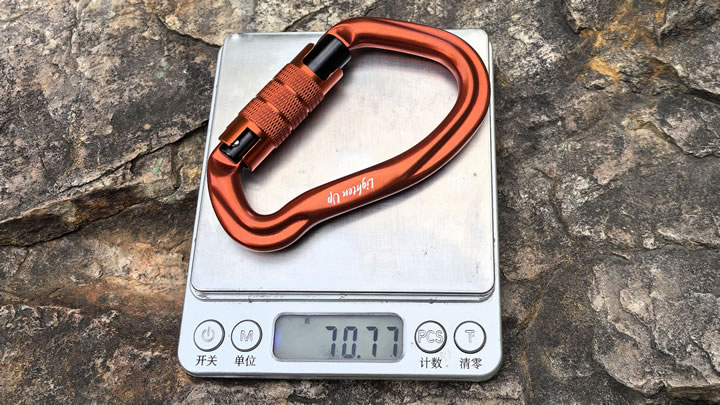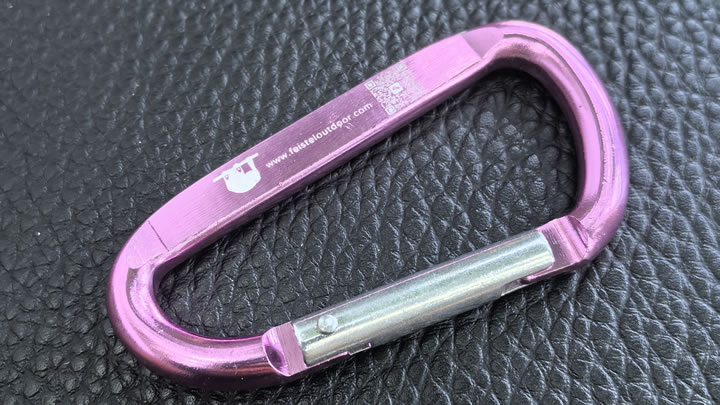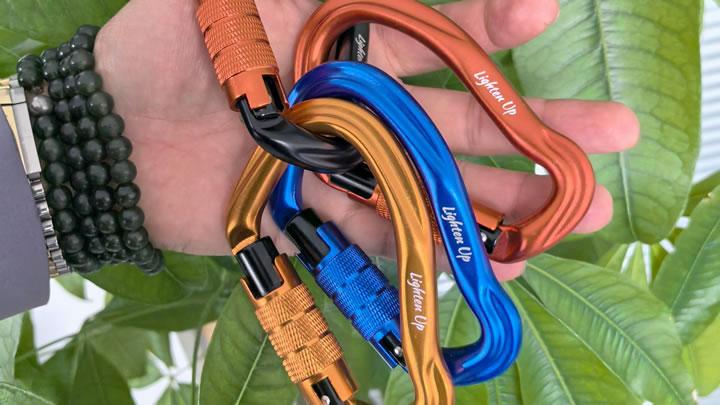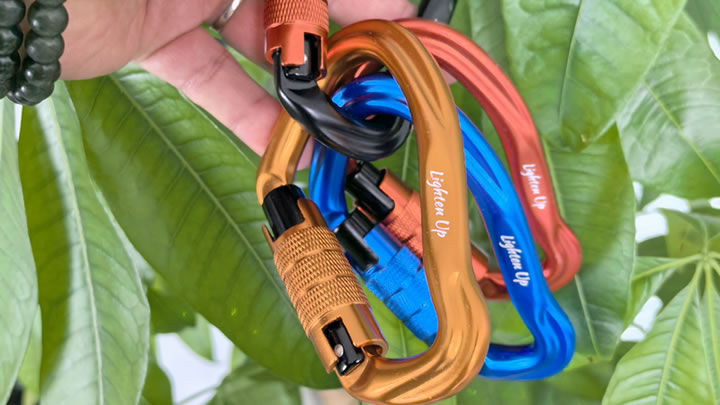Magnetic vs traditional gate carabiner mechanisms
As climbing gear evolves, carabiners with magnetic gate mechanisms have emerged as a game-changing alternative to traditional screwgate and auto-locking designs. This guide explores the technical differences, safety considerations, and real-world performance of magnetic vs. traditional gate carabiners, helping climbers make informed decisions for their next adventure.
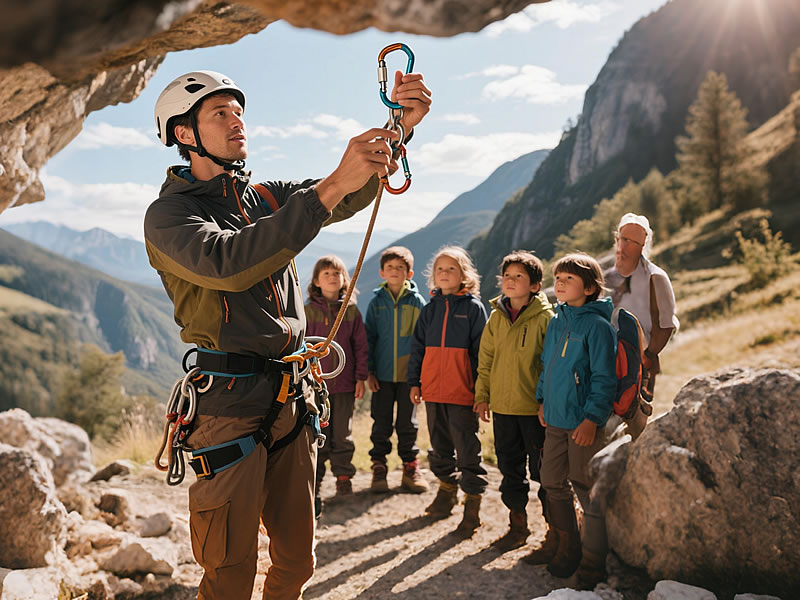
1. Understanding Gate Mechanisms
Traditional Gate Systems
- Screwgate Carabiners:Mechanism: A threaded gate that requires manual tightening to lock.Advantages: Widely trusted, affordable, and compatible with UIAA 121 standards .Drawbacks: Time-consuming to operate, especially with gloves. Risk of cross-threading or accidental unlocking due to friction against gear or rock.
- Auto-Locking Carabiners:Mechanism: Spring-loaded gates that automatically lock when closed.Advantages: Faster to use than screwgates, reducing human error. Popular for belaying and anchors.Drawbacks: Springs can weaken over time, and debris may interfere with locking .
Magnetic Gate Carabiners
- Mechanism:
2. Performance Comparison
| Factor | Traditional Gates | Magnetic Gates |
|---|---|---|
| Operation Speed | Slower (screwgate) or moderate (auto-lock) | Fastest (one-handed operation) |
| Security | Vulnerable to user error (screwgate) or spring failure | Resistant to accidental opening via magnets |
| Extreme Conditions | Better in freezing temperatures (auto-lock) | Susceptible to icing; requires careful maintenance |
| Weight | Heavier (screwgate) or lighter (auto-lock) | Comparable to auto-lock models |
| Long-Term Durability | Springs weaken over time (auto-lock) | Magnets retain strength but may corrode if uncoated |
3. Key Considerations for Climbers
Safety First
- Magnetic Gates:Ideal for high-consequence scenarios (e.g., multi-pitch anchors) due to their dual-action locking mechanism .Avoid using magnetic carabiners in environments with ferromagnetic debris, as particles may interfere with locking .
- Traditional Gates:Screwgates remain the gold standard for critical connections where redundancy is required (e.g., belay loops).Auto-lockers are preferred for quickdraws and gear slings, balancing speed and reliability .
Environmental Factors
- Cold Weather:Traditional auto-lockers with stainless steel springs perform better in freezing conditions than magnetic models, which may ice over .Always carry a backup carabiner in winter environments.
- Rock Quality:Magnetic carabiners’ smooth gates reduce snagging on rough rock, while traditional gates may catch on edges .
User Experience
- Ease of Use:Magnetic carabiners excel in high-stress situations, allowing climbers to focus on movement rather than gear .Traditional screwgates require practice to master, but their simplicity appeals to purists.
- Maintenance:Magnetic: Clean regularly to remove debris; avoid strong magnets or high temperatures, which can degrade performance .Traditional: Lubricate springs and inspect for wear (e.g., gate misalignment) .
4. Expert Recommendations
- Sport Climbers:Use magnetic carabiners for belaying and anchors to save time and reduce errors.Pair with traditional auto-lockers on quickdraws for lightweight efficiency.
- Traditional (Trad) Climbers:Opt for screwgates for critical placements (e.g., cams, nuts).Reserve magnetic carabiners for rappel anchors or high-traffic routes.
- Alpine and Winter Climbers:Stick to traditional auto-lockers or screwgates to avoid freezing issues.Carry a de-icing tool for magnetic models in extreme cold.
5. SEO Optimization Tips
To ensure this guide ranks well on search engines:
- Keywords: Use terms like magnetic carabiner vs traditional, UIAA 121 magnetic certification, and climbing gate mechanisms.
- Structure: Break content into clear sections with H2/H3 headers (e.g., Performance Comparison).
- Internal Links: Link to related articles (e.g., How to Choose Climbing Carabiners).
- External Links: Cite authoritative sources like UIAA and GearLab .
Conclusion
Magnetic gate carabiners offer unparalleled speed and security for climbers prioritizing efficiency, while traditional systems remain reliable in extreme conditions or budget-conscious scenarios. By evaluating your climbing style, environment, and safety needs, you can select the optimal mechanism to enhance performance and peace of mind. Always inspect gear regularly and follow UIAA standards for safe climbing practices.

